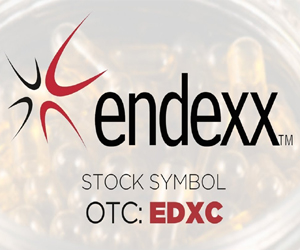Member Blog: The Most Common Gotchas When Calculating Dispensary Sales Tax in California
CaliforniaMarijuana Laws, Regulations, & Politics February 26, 2021 MJ Shareholders 0

by Daria Nagal, CPA, EA, at Red Eye CPA
California dispensary sales tax seems easy. After all, what can be difficult about sales tax? However, the cannabis sales tax formula is extremely confusing and contradictory. Cannabis accountants argue with cannabis attorneys about interpreting the CDTFA and California Code of Regulations.
But let’s start with the basics. Who pays dispensary sales tax in California, when is it paid, and how? You can manually set up the calculation of sales tax in your point of sale system. If the POS setup is correct, the dispensary customer ends up paying the correct sales tax. If the POS setup was done incorrectly, the client ends up paying the wrong amount and the responsibility for overwithholding or underwithholding lies on the cannabis dispensary. The dispensary is required to remit gathered sales tax to the CDTFA. The bill can be paid online, as long as the dispensary has a business bank account. The CDTFA will also accept cash. Depending on the size of the dispensary, the CDTFA sets up different payment plans. Bigger dispensaries are required to remit sales tax monthly. This arrangement is called the “prepayment plan.” The dispensary remits its tax each month, but files its tax return only a month after each quarter ends. Smaller dispensaries are not required to make monthly payments. They only need to pay four times a year to account for each quarter.
The CDTFA welcomes phone calls. Anyone from customer service can look up your account and answer basic questions. You don’t need to have a power of attorney for informational phone calls. However, the CDTFA assigns individual tax specialists to all of their big cash cows. And if you are one of those successful dispensaries, you need to know that out there you have your own business tax specialist that overlooks your activity and watches your steps. Only that specialist can waive interest and penalties on your account. To talk to him or her, you will need a signed POA.
Before we get into the boring tax calculation rules, I want to let you know that I have already written about this topic in my blog. The blog has visual instructions and is much easier to digest. You can find it here: https://redeyecpa.com/blog/california-dispensary-sales-tax/
Now let’s get in the dirty tax work and figure out how the dispensary sales tax is calculated. The cannabis sales tax is levied on the product’s cash price plus its excise tax. So, you can’t calculate your sales tax unless you know the correct excise tax. Currently, the excise tax is 15% of the retail price. For example, if you sell your product for $100, your client would have to pay $15 of the excise tax. Your sales tax will be calculated based on $115 ($100+$15). There is also a minor detail: non-cannabis products are taxed with the sales tax but are exempt from the excise tax. This means that you may mistakenly over-collect the sales tax if your POS is set up to levy the excise tax on non-cannabis products.
Furthermore, another aspect of sales tax computation: cannabis sales with medical state cards are not subject to sales tax. However, if a customer shows a doctor’s recommendation letter, he or she is still required to pay sales tax. Only state cards allow waiving of the sales tax requirement. Also, make sure that your product is being taxed net of all discounts. Discounts bring down the product’s price, and we always base our tax calculation on what the customer pays out of pocket. You should consider all of this when setting up the dispensary’s point of sale system. Boring and complicated, right? We are not even close to being done.
Now let’s talk about sales tax rates. The sales tax rate is determined by the zip code of the dispensary. Things get more complicated if you decide to deliver products to your clients. In case of the delivery, the sales tax rate will be based on the zip code of your customer. Therefore, you must update the POS with the correct sales tax rates for your delivery area. Also, according to Revenue and Taxation Code Section 6102, you must levy sales tax on delivery and safety fees if you charge those to the customer. As you can see, the home delivery option may jack up your customer bill. I recommend you inform your customer about his/her total bill price before delivery. Otherwise, you risk angering the person and losing them as a client.
Any mistake on the sales tax calculation lies on you, the cannabis dispensary. The CDTFA won’t chase unsuspecting customers. The agency will come directly to you, and you would have to provide reasoning for your calculations. If you under-collect from your customers, you will end up paying up the difference plus penalties and interest. If you over-collect the tax, you will end up remitting it to the CDTFA as well. You cannot keep over-collected cash. You didn’t earn this money, and should your customers or competitors find out, you will be at risk of a liability suit.
 Daria Nagal is an Enrolled Agent and Certified Public Accountant in California. She is the founder of Red Eye CPA, an accounting firm specializing in Cannabis accounting and taxation. When not reading NCIA blogs, she enjoys spending time with her family, walks on the beach, and baking brownies with Mary Jane.
Daria Nagal is an Enrolled Agent and Certified Public Accountant in California. She is the founder of Red Eye CPA, an accounting firm specializing in Cannabis accounting and taxation. When not reading NCIA blogs, she enjoys spending time with her family, walks on the beach, and baking brownies with Mary Jane.
MJ Shareholders
MJShareholders.com is the largest dedicated financial network and leading corporate communications firm serving the legal cannabis industry. Our network aims to connect public marijuana companies with these focused cannabis audiences across the US and Canada that are critical for growth: Short and long term cannabis investors Active funding sources Mainstream media Business leaders Cannabis consumers









No comments so far.
Be first to leave comment below.